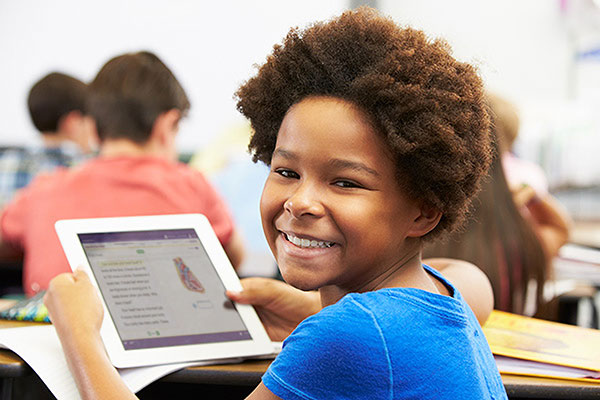 As a mother of four young children who are drawn to the iPad like moths to a flame, it’s a little hard for me to write a blog post about the upside of screen time. Mostly I see the iPad as a frequent source of conflict in my house. My kids want to play games or watch shows on it, and I want them to do things I’ve deemed more meaningful—read books, play outside, build with Legos, or, dare I even dream it, pick up their room. Indeed, plenty of research confirms the negative consequences of too much screen time, which is why so many parents find themselves fighting this battle with their children day after day.
As a mother of four young children who are drawn to the iPad like moths to a flame, it’s a little hard for me to write a blog post about the upside of screen time. Mostly I see the iPad as a frequent source of conflict in my house. My kids want to play games or watch shows on it, and I want them to do things I’ve deemed more meaningful—read books, play outside, build with Legos, or, dare I even dream it, pick up their room. Indeed, plenty of research confirms the negative consequences of too much screen time, which is why so many parents find themselves fighting this battle with their children day after day.
And yet, I’m well aware that there is an upside to this technology. My 22 years of working at Read Naturally have made this more apparent than ever. On any given day in the Read Naturally office, we receive positive feedback from students and teachers around the world confirming the power of the Read Naturally Strategy for struggling readers. As a writer given the privilege of working with Read Naturally students at a local elementary school, I’ve seen the incredible effects of this strategy firsthand.
I have also witnessed classrooms transition from Encore, the paper-based version of our materials, to Read Live, which students use on computers or tablets. In this case, the screen didn’t replace a greater learning activity at all. It was simply like asking students to read a book on a Kindle instead of in paperback. Same stories, same strategy, different format.
So what was the upside? With Read Live, the organization of pencils, papers, CDs, headphones, timers, and other materials disappeared. Students were able to get right to work. Over the course of a year, these few extra minutes of reading time per day added up to accelerate progress. Because the Read Live suite offers four different programs in the same platform, students could easily toggle from one program to the other. They could work on phonics in Word Warm-ups Live and then switch to the stories in Read Naturally Live with the click of a button. The program also made data organization a breeze for teachers, which freed up their time to assist students. Furthermore, the “moth to the flame” phenomenon worked in everyone’s favor. Students were so drawn to the program on the screen, they were more motivated than ever to work on fluency. They realized, in a new way, how much fun reading could be.
Our home version of Read Live, One Minute Reader, has a similar upside for kids using this program to accelerate their reading progress over the summer, on weekends, or after school. It's wonderful when kids just pick up a book and start reading. But when they use the One Minute Reader program, they have audio support for unknown words, plenty of content at a level that will challenge but not frustrate them, a motivating system for tracking progress, a game-like interface to keep them engaged, and more. This system makes reading enjoyable while offering kids the support they need to improve quickly. The whole program, with dozens of high-interest stories, is just a click away for $8/month.
As you know, the more fluent students are, the more interested they are in reading. After using Read Live or One Minute Reader, books have greater appeal because, for the first time, students can read and comprehend them well. If this is the end result, and a screen can help achieve it with increased efficiency, I’d call that an upside for sure.
If screens (in moderation!) are a part of your students' or children's lives, consider a well-developed, tried-and-true educational program like Read Live or One Minute Reader. If your kids are game lovers, you might also want to check out Read Naturally’s fun, vocabulary-boosting Splat-o-Nym app for the iPad. As summer approaches, we hope your screen time battles are minimal and that Read Naturally's programs are a solution everyone can agree on.
 Share your student’s success story—nominate him or her for our Star of the Month award. Win a Barnes & Noble gift card for the student and a Read Naturally gift certificate for your class!
Share your student’s success story—nominate him or her for our Star of the Month award. Win a Barnes & Noble gift card for the student and a Read Naturally gift certificate for your class!
Post a New Comment